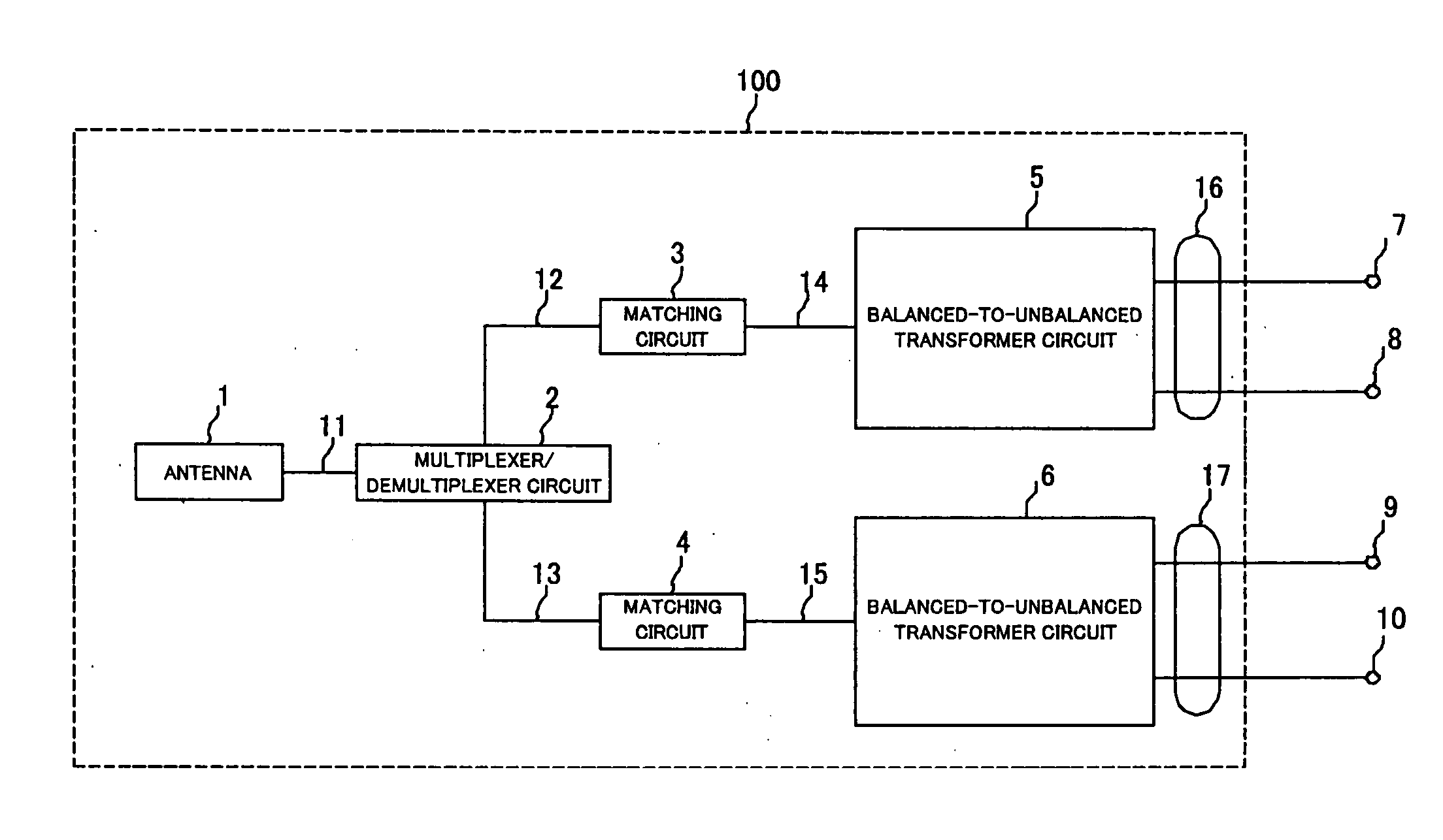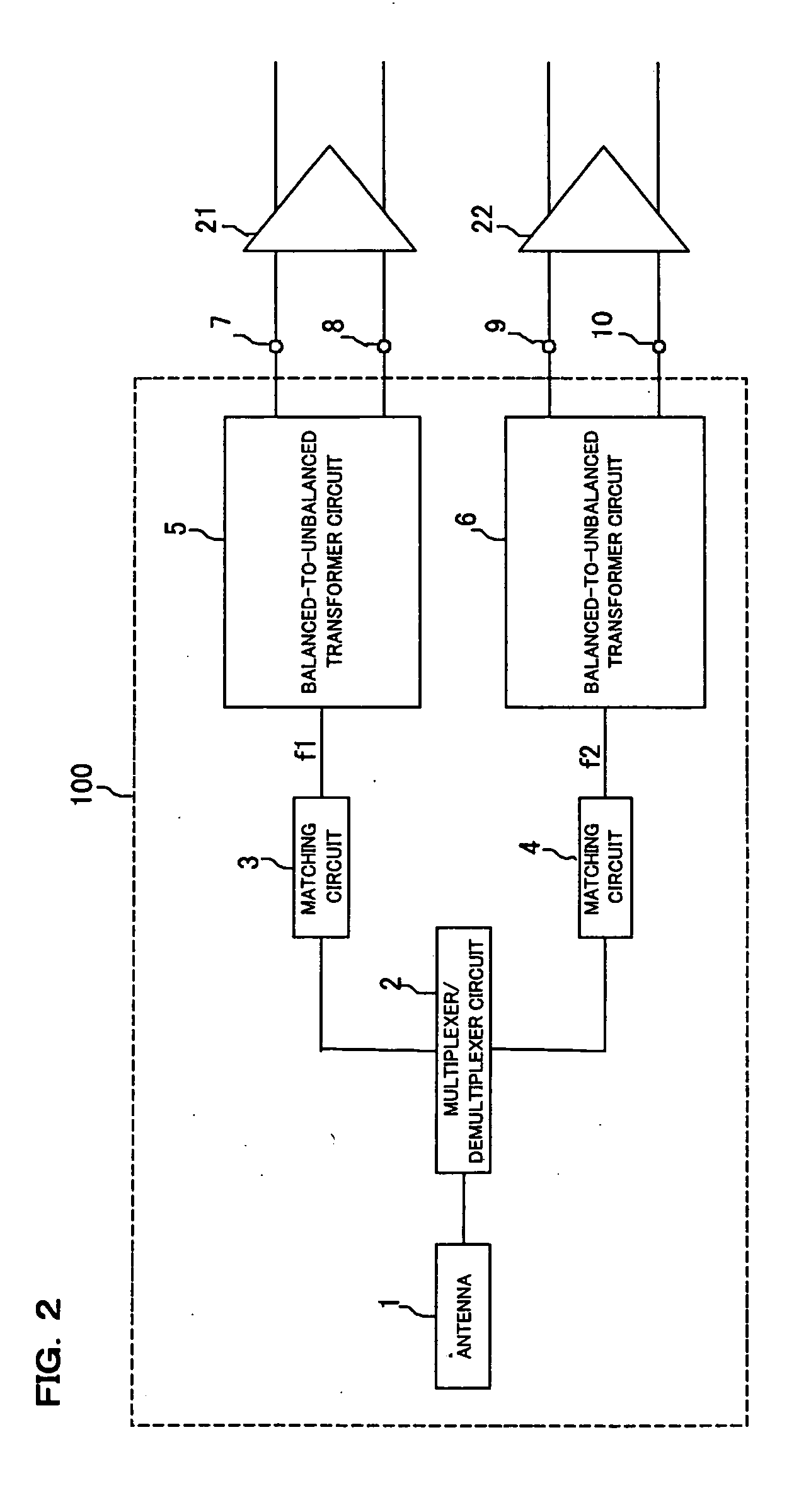High-frequency composite component
a composite component and high-frequency technology, applied in the direction of electrical equipment, transmission, coupling devices, etc., can solve the problems of increasing the area occupied by the circuit, increasing the loss of signal, and requiring a tedious job, so as to reduce the cost and the size of the overall system, simplify the circuit from the antenna, and reduce the cost and the effect of siz
- Summary
- Abstract
- Description
- Claims
- Application Information
AI Technical Summary
Benefits of technology
Problems solved by technology
Method used
Image
Examples
Embodiment Construction
[0031] An embodiment of the invention will now be described with reference to the accompanying drawings.
[0032]FIG. 1 is a block diagram showing the circuitry of a high-frequency composite component according to one embodiment of the invention.
[0033] A high-frequency composite component 100 of this embodiment is applied to a portion relating to, for example, wireless communications in a wireless LAN, and includes, as shown in FIG. 1, an antenna 1, a multiplexer / demultiplexer circuit 2, matching circuits 3 and 4, balanced-to-unbalanced transformer circuits (baluns) 5 and 6, and input and output terminals 7 through 10.
[0034] The terminal of the antenna 1 is electrically connected to one terminal of the multiplexer / demultiplexer circuit 2 via an unbalanced line path 11. Another first terminal of the multiplexer / demultiplexer circuit 2 is electrically connected to one terminal of the matching circuit 3 via an unbalanced line path 12. Still another second terminal of the multiplexer / de...
PUM
 Login to View More
Login to View More Abstract
Description
Claims
Application Information
 Login to View More
Login to View More - R&D
- Intellectual Property
- Life Sciences
- Materials
- Tech Scout
- Unparalleled Data Quality
- Higher Quality Content
- 60% Fewer Hallucinations
Browse by: Latest US Patents, China's latest patents, Technical Efficacy Thesaurus, Application Domain, Technology Topic, Popular Technical Reports.
© 2025 PatSnap. All rights reserved.Legal|Privacy policy|Modern Slavery Act Transparency Statement|Sitemap|About US| Contact US: help@patsnap.com



